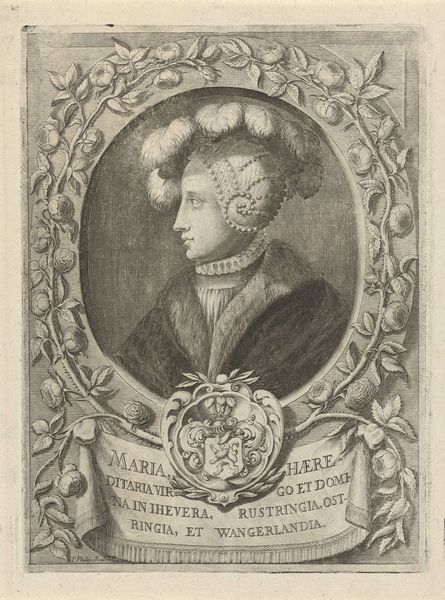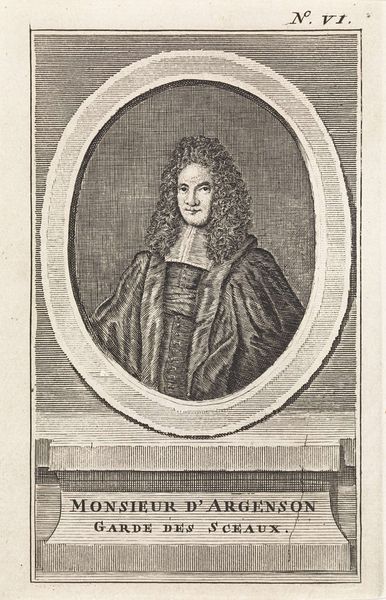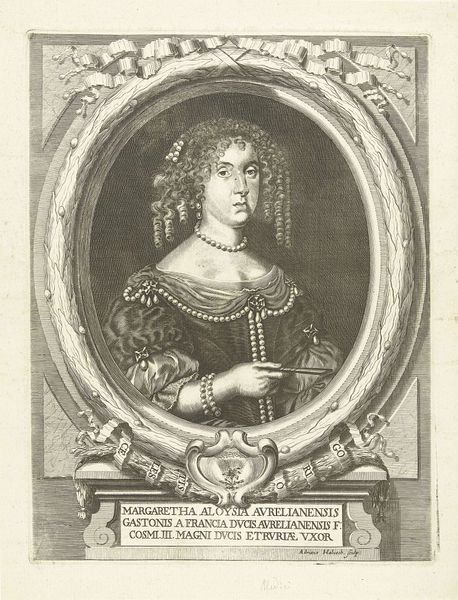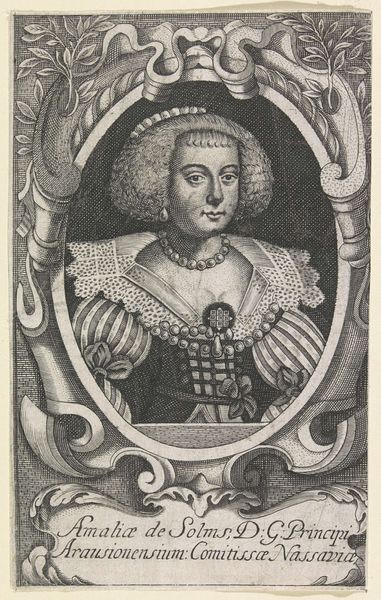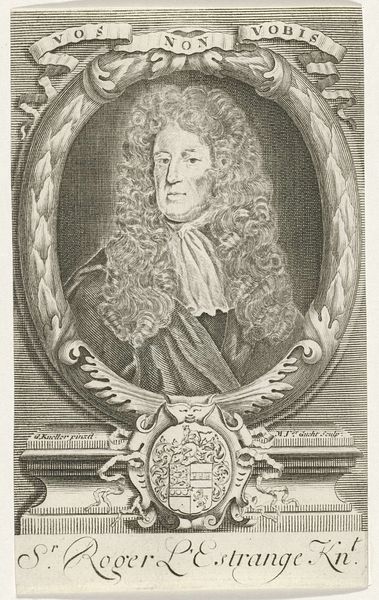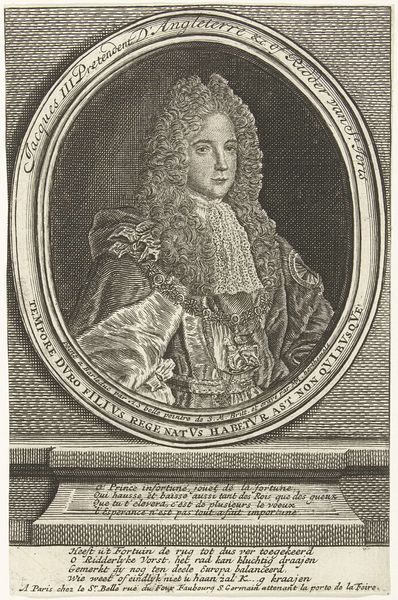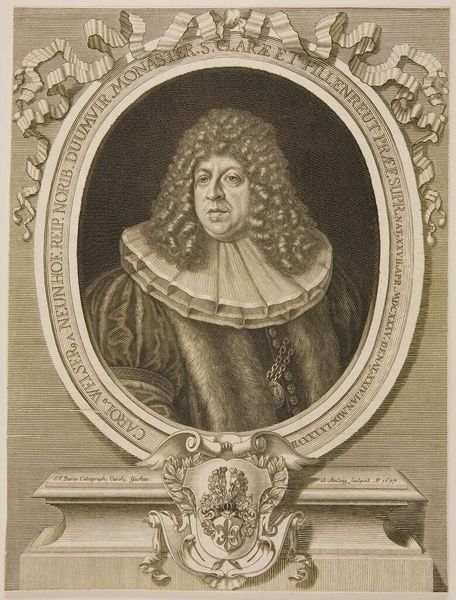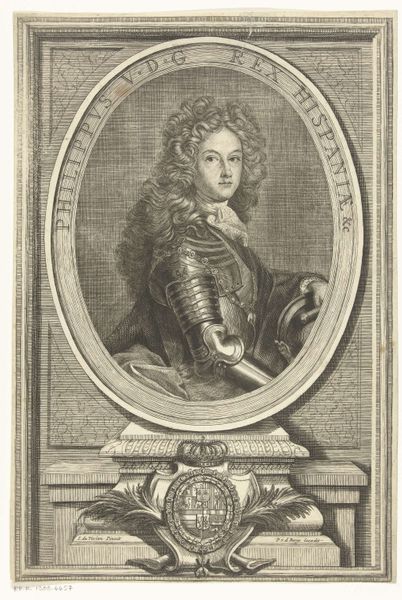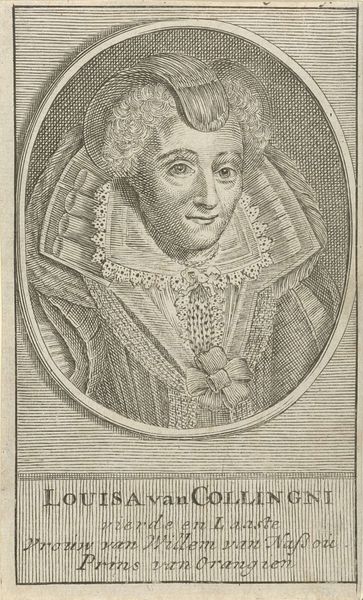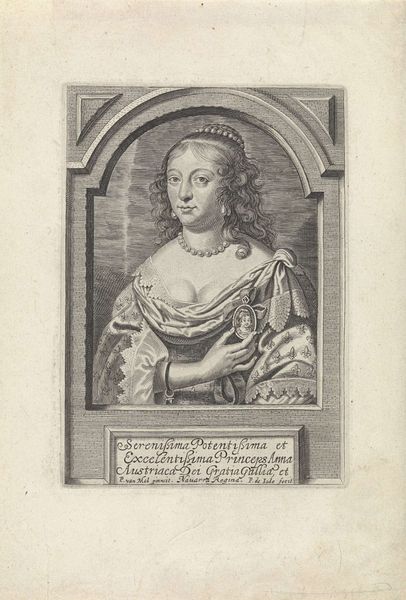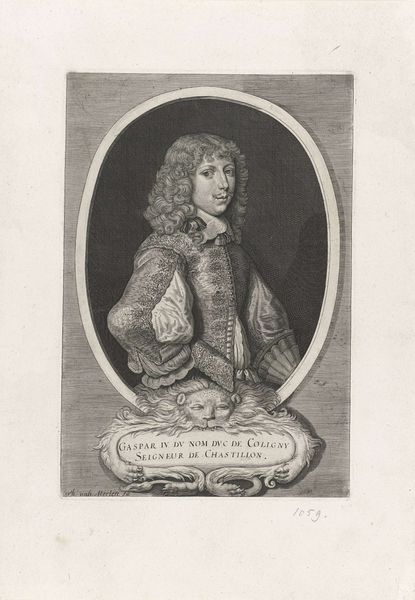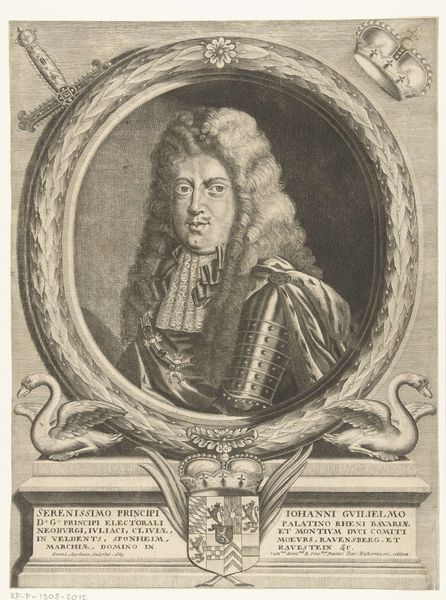
print, engraving
#
portrait
#
baroque
# print
#
figuration
#
history-painting
#
engraving
Dimensions: height 138 mm, width 95 mm
Copyright: Rijks Museum: Open Domain
Editor: This is a print, titled *Portret van Christianus Cornelisen,* dating sometime between 1688 and 1725, attributed to Aernout Naghtegael. The man's elaborate wig immediately draws my eye; it makes me wonder about status and social position in that era. How do you read this portrait in its historical moment? Curator: It's a fascinating example of how portraiture functioned as a tool of power and social performance. Consider the context: the Dutch Golden Age was waning, and displays of wealth and status became increasingly important for maintaining social hierarchies. This engraving, with its baroque style, immortalizes Cornelisen and broadcasts his perceived importance. The elaborate wig, as you noticed, is a key signifier. Editor: So, it's not just about likeness, but also about constructing a certain image? Curator: Precisely. The details matter. Note the coat of arms and inscription – these further establish Cornelisen's identity and perhaps his lineage or affiliations. Engravings like this were often circulated, expanding the reach of this carefully crafted image. To whom was this image primarily directed, and what impact might its circulation have had on them? Editor: I hadn’t thought about its broader circulation. It probably wasn't intended for just his family, but also for political allies, or even the public. Its aim, as you point out, was to reinforce his public image and, by extension, the power structures he represented. Curator: Indeed. It highlights the way art acts within social and political landscapes. Editor: That's so interesting. I initially focused on the aesthetic, but understanding its social function makes me appreciate it in a whole new light. Thank you. Curator: My pleasure. Examining art within its historical context reveals so much more than just the surface aesthetics.
Comments
No comments
Be the first to comment and join the conversation on the ultimate creative platform.
